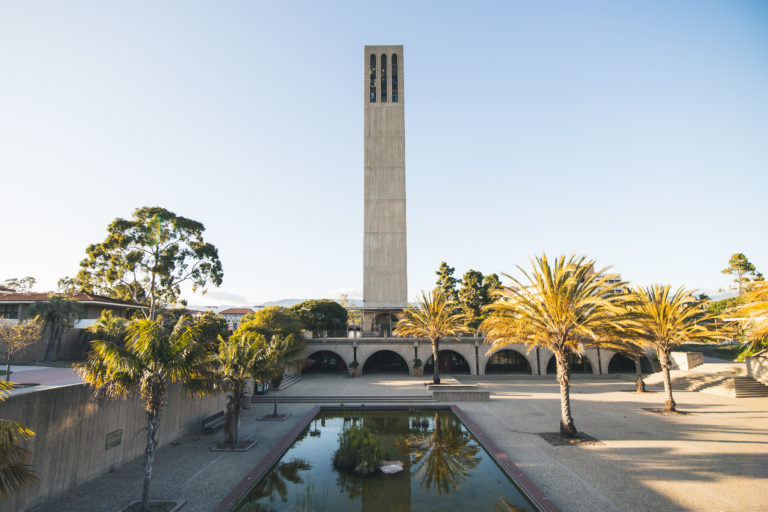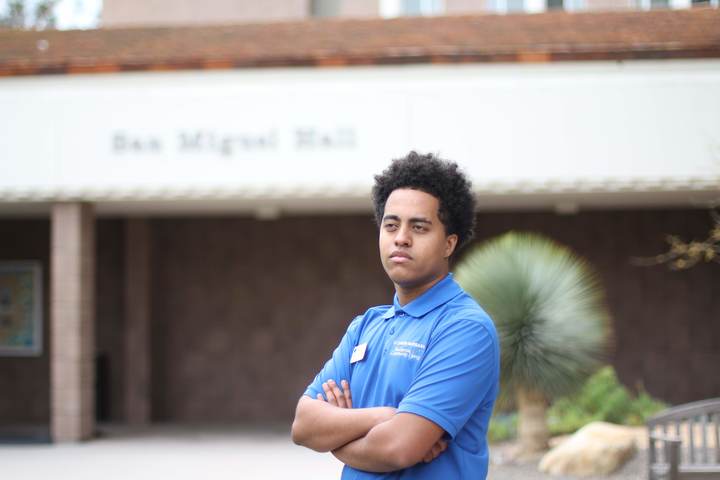
Eddie Lo
Contributing Writer
In her college application essay, Ilanah McSharry wrote about her dream of pioneering a better future for her family by getting a college degree. As the first person in her family to be able to go to college, she wanted to set an example for her younger brother; she hoped in the future that her children would also follow in her footsteps.
In fall 2018, McSharry enrolled at UC Santa Barbara as a sociology major. But despite coming from a middle-class family, she didn’t have enough funds to fully cover her tuition. To help cover the cost, McSharry worked 20 hours a week that year, but even that wasn’t enough.
“The cost of attendance haunted me almost my entire year there,” she said in an interview with The Bottom Line (TBL). It wasn’t long until stress from school and her financial situation started to overwhelm her. She recalled once needing an extra $40 for school supplies, but her parents were unable to send her the money because they were also struggling to pay their bills and rent.
As the quarter went on, McSharry realized that she didn’t have many options. It was either: be in debt for the next 20 years, or leave UCSB and give up her studies.
“I felt so out of place like I didn’t belong. I knew I couldn’t afford it, and I knew this was a dream,” she said.
McSharry withdrew from UCSB after her first year and never came back.
She is not alone. Tuition for higher education is now the highest it has ever been in U.S. history, and the tuition hike doesn’t seem to be stopping — UC President Janet Napolitano proposed new plans in January to raise systemwide tuition for all students, though the voting was postponed twice, in January and again in March.
College in the United States was once affordable. In 1971, attending a public college for a year cost $8,300 on average in the United States (in 2016 dollars). By 2016, the annual cost had risen to more than $20,000.
In California, the main reason for this tuition hike is a cut in funding from the government, at a time when other state expenditures have been ramping up, said Christopher Newfield in an interview with TBL. Newfield is the former chair of the UC Systemwide Senate Committee on Planning and Budget and now an English professor at UCSB who has authored several works on higher education, including “The Great Mistake: How We Wrecked Public Universities and How We Can Fix Them.”
From 2007 to 2018, California’s state health care spending rose by 146 percent, to the point where the state now spends three times as much money on health care than on education. And over the past three decades, government spending on prisons and jails has increased around three times as fast as spending on schools. At a time when the prison incarceration rate is rapidly increasing, it costs twice as much to incarcerate an inmate as it does to educate a California resident at a UC school every year.
“States have looked at universities and said, if we cut you, it is not going to be so bad because you can just go charge your customers, your students. Whereas with health care, with incarcerated people, we can’t charge them,” explained Newfield. “So public funding decreases, tuition funding goes up.”
In 2009 alone, the state cut $715.5 million from higher education. That same year, the UC Board of Regents raised tuition by 32 percent.
From 2014 to 2019, UC non-resident tuition continued to increase by around 5 percent every year. Defending the tuition hike, UC President Janet Napolitano explained that the tuition increase was a necessary step to sustain the quality of UC schools.
In January, Napolitano proposed extending that increase to in-state students as well for the next five years. The controversial plans were opposed by many, including California Governor Gavin Newsom, who, prior to the proposal, had increased UC funding by $217.4 million.
The proposal calls for one-third of all new tuition and fee revenue to be returned to students through financial aid, as part of the UC’s stated mission to make higher education more accessible for low-income students. Currently, the UC enrolls more low-income students than any other public research university system in the country.
But Napolitano’s proposal means a greater financial burden for middle-class students, who cannot fully afford their education but do not receive enough in financial aid to pay the bills.
In an interview with TBL, students spoke about their thoughts on the current tuition situation. “If you are a person who cannot fully fund yourself and if you don’t have the full financial aid package, you’re either going to work or you’re taking out a considerable loan. I think that is the status quo,” said Isaias Ghezae, a second-year student at UCSB who is double majoring in psychological & brain sciences and philosophy.
Ghezae receives financial aid, but not enough to cover all of his tuition. On top of taking out a loan during his first year, he currently works two part-time jobs on campus — as a residential assistant and as an undergraduate peer mentor.
While Ghezae appreciates his financial independence and the benefits of his two on-campus jobs, he also thinks the financial demand of college prevents many students from focusing on academics.
“Imagine my life without having to worry about having two jobs, I could take more classes, I could be more invested in my classes. I could spend time with the professoriate here,” said Ghezae. “I would essentially be doing the things I thought I’d have access to when I first came to UCSB. But instead, I have to spend half of my time working.”

Students from different income levels have dramatically different college experiences, reflecting a socioeconomic inequality on college campuses.
“The rich kids who are able to fund themselves are able to take advantage. And they’re going to be the first in line to office hours, they’re going to be the first in line for all the resources that everyone else is paying, but they’re the ones that have the time to use,” said Ghezae.
“I think it’s hurting the middle class, the kids, the people that want to have that upward mobility in life. They’re having a hard time doing it because they have to worry about the constraints that have been affecting them since their childhood,” he added.
Joo Yeon Yoo, a second-year student at UCSB majoring in film and media studies, works three part-time jobs on campus — as a residential assistant, a UCSB tour guide, and a library assistant during night shifts.
Yoo told TBL that she has had to sacrifice her social life for work. Often, she has to work whenever her friends want to hang out, and when she’s not working, she is too tired to hang out with them.
Despite financial aid, Yoo, who is from an immigrant background, is left with no choice but to work while pursuing her degree. Her father is currently pursuing a Ph.D. She and her two brothers took out loans for their college degrees, and her sister, a high school senior, is attending college next year.
She not only has to support herself but also her family, who are all financially strained because of the high cost of tuition. As a result, she worries about her family’s future — she can only see years of working and paying off debts instead of having a normal life and a steady income.
Universities are adding to the crisis by overspending even while they are underfunded. As a result, universities seek more funds by raising tuition, said Newfield.
“Americans tend to think that competition makes everything better, but competition in higher education has massively raised costs,” said Newfield. “You’re trying to get professors away from your competitors by paying higher salaries. You’re trying to build better facilities so richer students will come to your school.”
“Every big research university in California has to have some kind of quantum computing or bioengineering building and center if they are going to be taken seriously as a research place,” said Newfield. “These are great fields, but it’s not clear that every university can pay for or needs to pay for a major international center.”
Napolitano, however, disagrees. She believes expensive investments are necessary for the universities to provide hundreds of thousands of Californians a quality of education on par with elite universities like Ivy League schools.
If this trend continues, it is likely that there will be more tuition hikes in the future, according to Newfield. And it is going to hurt students like McSharry, who was unable to receive the education she wanted because she simply couldn’t afford it.
“I love school. I love learning. I want to be an educator,” said McSharry.
“You’re told your whole life, your goal is to go to college, You go to college and then you’re going to make it. But if I go to college, then the next 20 years of my life, I’m paying off the $100,000,” she said. “I wish I could get a degree from UCSB, but it just really wasn’t realistic.”










